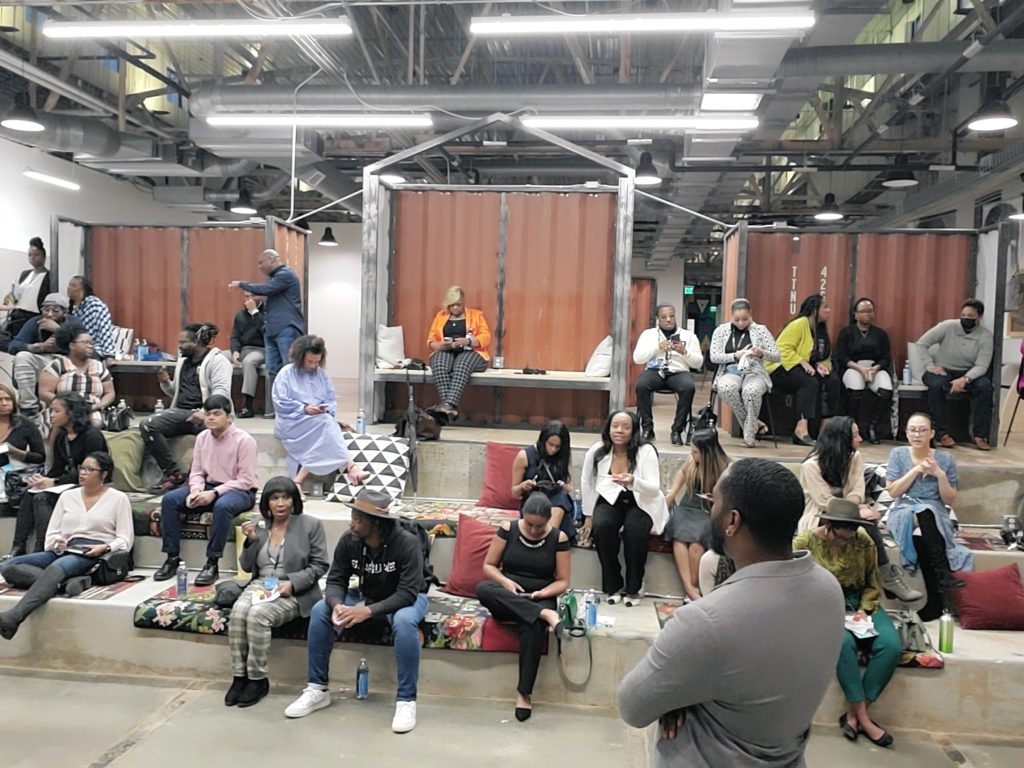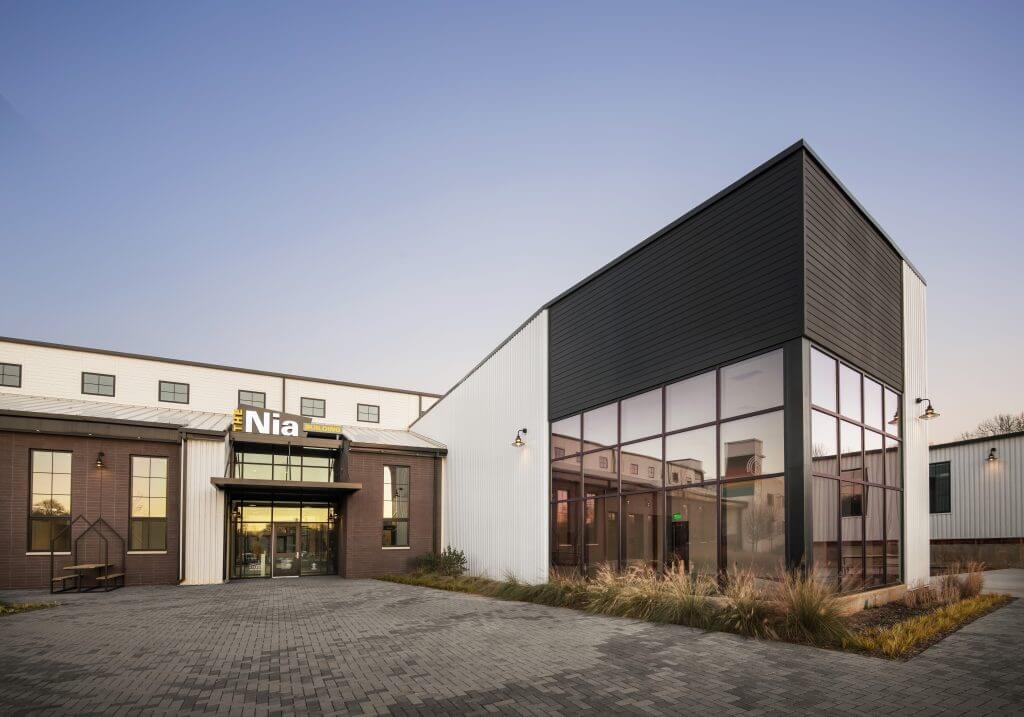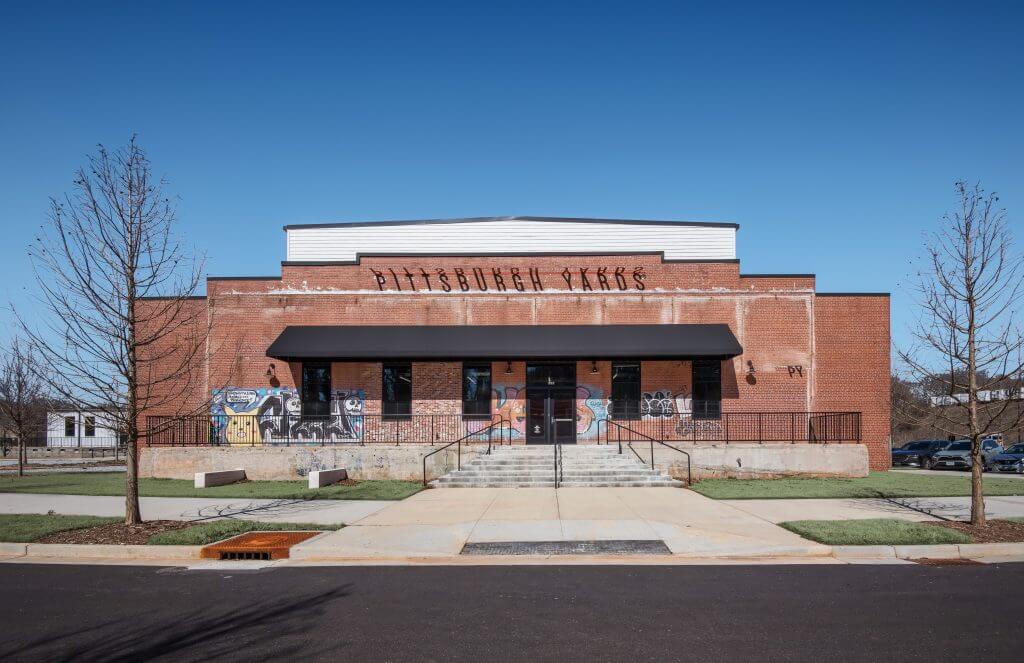After more than four decades of economic neglect and political volleying, one of Atlanta’s oldest and most beloved communities is getting the attention of the city and the nation. The Pittsburgh neighborhood bordered by University Avenue, Pryor Street, Ralph Abernathy Blvd. and Metropolitan Parkway is on track to becoming proof positive of how thoughtful planning and strategic reinvestment can revitalize a community and resurrect the dreams of its residents.
The cornerstone of Pittsburgh’s comeback is a state-of-the-art business and community center on 31 acres of former farmland used by Clark College’s agricultural department to provide fresh fruits and vegetables to the community just southeast of I-20 on University Avenue in Atlanta.
Now the property located along the Atlanta Beltline houses more than 140 Black-owned and operated businesses and organizations is a gleaming example of community and economic development done right.

The facility which opened in December 2020, during the height of the pandemic has – much like the city the neighborhood it gets its name from – managed to overcome what some thought were insurmountable odds and come out the other side as one of the most appealing and affordable developments on Atlanta’s southside.
How this group of resilient residents, concerned community stakeholders and persistent business owners managed to prevail through financial and political challenges is a feat that communities in decline are taking note of. Apparently, they simply refused to leave and sever ties to their heritage homes and the long-standing relationships that connect them with each other and the land.

But the fight for control of the redevelopment the 324-acre Black working-class neighborhood, a prime slice of Atlanta culture with its signature shotgun houses is by no means over. The neighborhood caught the attention of speculators and investors wanting to buy properties cheap and sell high, and they did – until Pittsburgh’s people determined to reclaim their heritage and their homes.
Visionary community advocates implored long-term residents not to bite the $50,000 carrot developers dangled in front of them and encouraged them to hold on for a bigger return on their years of investing in and living in the community and to hold on to help build rebuild the local legacy bigger and better.
“Developers came in we tried to let the community know how important the property was and we told residents don’t take the $50,000 they were offering for your property in cash,” explains L. Winfrey Young, community activist and vice president of the Pittsburgh Neighborhood Association. “They were going door to door offering people money to sell out. … Six years ago, you could purchase any house [in the neighborhood] for $30,000. Last summer, a house sold for $900,000 and the summer before that, just one year prior, one sold $700,000.”

“It’s our intent and purpose to have Pittsburgh registered as a historic neighborhood like Grant Park or the West End … because it hasn’t been which allows these developers to come in and build a bunch of birdhouses, [houses that are just straight up and down] in Pittsburgh,” continued Winfrey Young.
For years, the median income in this community, one of Atlanta’s oldest was $29,000. “That’s coming up now because new people are moving in and families who were here are moving back … the young folks. So, that’s going to rapidly change as well and then the Beltline brought in and Pittsburghers brought in people who want to live in the community and who are coming in taking some of these older properties and refurbishing.”
The Nia BuildingTM is the heartbeat of the Pittsburgh Yards ecosystem and is known to be a little different from other co-working and office space establishments. Known as a “place of purpose” with 101 offices and unlimited co-working memberships available, it is mission-driven and community-inspired.

“I would say Pittsburgh Yards is a disruptor in the real estate marketplace,” explains Chantell Glenn, Senior Associate at Atlanta Civic Site, for The Annie E. Casey Foundation, which provided more than $26 million in financing for the project. “We galvanize around this project to provide and preserve affordable commercial office space for small businesses, whether they were working out of their homes, or in some other place outside of the city of Atlanta having to travel to access more affordable space.”
Everything about Pittsburgh Yards is intentional from the name of the building to the art on the walls, to the street names on which people drive and the access the community has to it.

As it has evolved, it’s unofficially become a “reclamation project”, bringing the land back to its purpose and to once again use it to pour into the ancestors of the ancestors of the ancestors who founded it, in an effort to create some new firsts in the future to benefit the community and Atlanta and beyond.

“The history that we’re talking about today really is the platform of this project, which was to preserve this land [and restore it] to what it originally was, and that was for training black entrepreneurs,” said Glenn. It was a different time and a different trade. But now we see us in – meaning Black folk – in so many more different industries and that is what we’re trying to attract here.”

“Maybe you’re offering accounting services or real estate services. Maybe you’re a creative, maybe you’re a painter, or you’re in marketing, or you’re we have that trade here. In terms of a business,” said Glenn. “We have an embroidery company. We have a tea company, people are making things on direct to market and some of them are on a global level. And they need a place to grow and scale and we would love for them to scale on out. You know, that’s not necessarily a bad thing,” she concluded.

And to top off this local success story there is that spectacular rooftop space, rivaling any office building in a 10-mile radius.

DID YOU KNOW:
- Pittsburgh was founded in 1864, before the Civil War ended. That meant the people who founded it were runaway slaves, free former slaves, and agents of the Freedman’s Bureau.
- The Atlanta Pittsburgh neighborhood was named and chartered in 1883, making it one of the first Black working-class suburbs in Atlanta.
- The Pittsburgh neighborhood is one of the single largest communities with shotgun houses that was built around Pegram railroad repair shops.
- The smoke from the rail yards resembled the heavy smog produced by the steel mills of Pittsburgh, Pennsylvania, resulting in the neighborhood’s name.
The Pittsburgh neighborhood had a lot of firsts:
- The first Black orphanage existed in the Pittsburgh neighborhood (many of the “passing” mothers left their darker-skinned babies at the train station when they headed north to escape oppression in the South).
- The first school for Negro children to be admitted into the Atlanta Public School system was called William Crogman Elementary. It began as the Atlanta School but was not admitted into the school system until the building was financed, built, and was re-named.
- The first Black doctor to work at Grady came from this neighborhood as well as many prominent lawyers
- The first Black president of Clark College (now Clark Atlanta University).
- Self-sufficient and thriving, Pittsburgh was a landing place for small businesses, with the foundation set by formerly enslaved ancestors. There were shoemakers, shoe repair shops, the Pink Store and Squeeze In restaurant – the original creators of the fried chicken sandwich with pickles.


